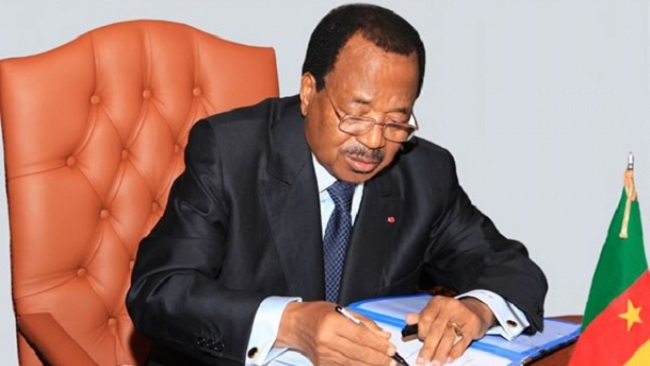Pele or Edson Arantes do Nascimento, a descendant of slaves, has on many occasions put on his cleats in Africa to do what he did best – light up the pitch and hearts with a touch of his genius. By Ibrahima Dione
Two days before the world entered a new year, Pele departed like the waning hours of 2022.
The king of football is being laid to rest on Tuesday at the Memorial Necropole Eucumenica, a vertical cemetery with the appearance of a building in Santos, where the three-time world champion (1958, 1962 and 1970) bought his place on the 9th floor in 2003.
All over the world, Pele’s memory has been greeted by a myriad of poignant testimonies.
In Africa, Ghana’s Abedi Ayew, known as “Pele,” winner of the European Champions League in 1993 with Olympique de Marseille, mourned a “mentor.”
George Weah, to date the only African to win the Ballon d’Or, admitted to being inspired by the lord of football stadia.
“He told me remarkable words of motivation when I first met him in Monaco. It helped me to become the best player in the world in 1995. He guided young athletes like me to greatness,” said the former AC Milan forward who now leads Liberia as president.
These and more were all things that made Patrice Motsepe, president of the Confederation of African Football (CAF), say that Pele “was a unique source of inspiration for the continent”.
The Ivorian Didier Drogba especially remembered the “contagious humility” of the player born on October 23, 1940 and his love for football.
“It was a pleasure to share this passion with you, my friend,” Cameroon’s Roger Milla wrote while compatriot Samuel Eto’o wrote that “the best (footballer) of all time rest in peace forever.”
A Brazilian whose ancestors left Africa during slavery, Pele returned to his roots with the Seleção (Brazil’s national team).
He opened the scoring in a 3-0 friendly win over Algeria in Oran on June 17, 1965.
A second match, scheduled for the municipal stadium of Belcourt, did not take place due to a coup in Algiers.
From May 28 to June 11, 1967, this time with beloved club Santos, the striker who was ahead of his time played and scored in wins against Senegal (1-4), Ivory Coast (1-2), Zaire (now Democratic Republic of Congo, 1-2), Gabon (1-4) and Congo (2-3).
“The Stade de l’Amitié, inaugurated in 1963 by President Leopold Sedar Senghor of Senegal, slowly replaced the ‘Parc Municipal des Sports’ where the cream of African football of the 1950s played.
The current Demba Diop stadium has hosted many excellent footballers of the past but in the 1966 to 1967 season, it welcomes the most prestigious of them all the football magician, the incomparable Pele.
Senegalese fans spontaneously gave him a warm reception, Daour Gaye says in his book entitled “The History of Senegalese Football. Volume 1: From AOF to The Independence Era”.
Nine of the 15 goals of the South American team during their Africa tour were scored by the legendary Number 10: two hat-tricks against Senegal and Congo, a double against Zaire and a goal against Ivory Coast.
”They are good teams, but they lack technical preparation…To really judge the value of African football, its representatives must go and play away from home,” Pele had said disinterestedly after those unforgettable matches for the privileged few at a time when television did not exist in those African countries he visited.
“In Dakar, despite the high price of tickets (2,000, 1,500, 1,000 and 500 CFA francs), there were 10,000 fans, 25,000 in Abidjan, and more than 60,000 in Kinshasa,” reported Tunisian journalist Mahjoub Faouzi in the French monthly ‘Miroir du football’ No. 92 of July-August 1967.
President Mobutu Sese Seko of Zaire (now DR Congo) had granted an afternoon to his country’s officials to go to the Tata-Raphael stadium where the game was being played.
“Pele was considered a child of the African continent. From his time, Africans have a fondness for Brazil. In the World Cup, people still support the Auriverde”, Senegalese journalist Mamadou Koume sai.
Also well known in the African sports press, Mamadou Kasse claims the illustrious Pele restored the image of the black man in history: “Pele knew, in his field that is soccer, to bring his precious stone to the appointment of the universal, demonstrating the capacity of resistance and resilience of the black man in the face of all adversities. If there is someone who has strongly contributed to the recognition of the black man and established a great bridge for a positive and constructive humanity, it is him.”
The scorer of 1.281 goals including 6 quintuplets, 30 quadruplets and 92 triplets in 1363 games spanning a 21-year career, Pele realized that his talent helped break the chains of racism.
He said: “There were two important moments. During the 1958 World Cup, when the King of Sweden came down on the field. For the first time in history, he was photographed shaking hands with a black man. The second event was when Queen Elizabeth II awarded me a Knight Commander of the British Empire. Again, that was a huge symbol. ”
Two years after their trip to Africa, Santos went to Nigeria. It was late January 1969 and the country was embroiled in a civil war.
According to legend, the warring parties had to agree on a 48-hour ceasefire to allow two matches to be played, one against the Nigerian team and the other against a local team, Benin City, which was close to Biafra.
In 1976, Pele, then playing for the New York Cosmos in the United States, was scheduled to take part in a friendly match in Lagos and attend the opening of soccer schools.
However, General Murtala Mohammed, who was in power in Nigeria, was assassinated by gunmen on February 13, when this native of Brazil’s Três Corações and his teammates had already arrived.
FIFA’s best player of the 20th century took refuge in the Brazilian embassy, waiting there for three days, before fleeing disguised as an airline pilot.
Despite this misadventure, he returned to Nigeria in 1978 as part of a tour by Fluminense, another Brazilian club.
Pele was invited to kick off a match against a local club.
However, a rumor said he was also wanted him on the pitch, as a player in the game.
Fearing that there would be trouble, the Nigerian police managed to convince the player to put on the Rio de Janeiro team’s jersey for 45 minutes.
A retired Pele returned to Africa several times.
After the passing of Nelson Mandela, with whom he shared a strong friendship, he tweeted: “He was my hero, my friend, my companion in the struggle for the cause of the people and for peace in the world.”




